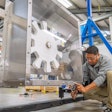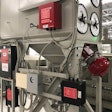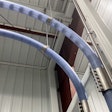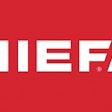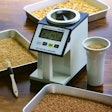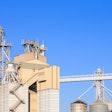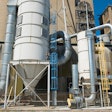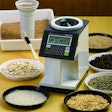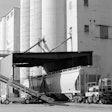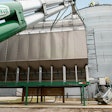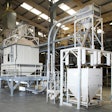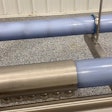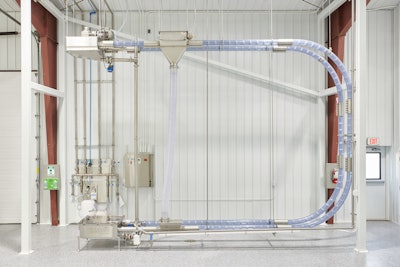
In every step of pet and animal food production, from receipt of raw materials through packaging, keeping foreign matter from entering the process stream and maintaining hygiene are critical objectives. So is retaining product identity preservation (IP), which adds value by ensuring a quality product, free of adulteration.
As such, many food processors are reconsidering the use of open conveying systems such as bucket elevators and flat-belt conveyors in favor of enclosed systems designed to prevent exposure to ambient conditions and possible contamination.
Since the 2011 enactment of the FDA’s Food Safety Modernization Act, the importance of preventing product contamination has only increased with stringent product track and trace mandates as well as demands for safety.
Additionally, as pet and animal food processors seek to increase production uptime and reduce laborious maintenance, the ease of cleaning such equipment is a major concern.
“To create added value, our pet food and animal feed customers are trying to do product identity preservation (IP)," says Jim Moline, who owns Moline Enterprises, a Butler, MO-based company producing primarily pet food as well as International Commodity Services, a Kansas City, KS-based animal feed processor. "With traditional high-volume conveying systems, however, there is more potential for unintended cross contamination."
In pet and animal food production, line changeovers have become a focal issue, relative to both cleanliness and changeover speed as companies are increasingly running different product lines within a single shift or day.
Despite these changeovers, processing plants are expected to maintain rigorous levels of sanitary, contamination-free operation.
“When switching between products, there is always going to be some residue," says Moline. "With traditional high-volume systems, that equates to a lot of labor and time to clean it out and prevent potential cross contamination."
Also important to pet and animal food processors’ bottom line is the capability of conveying equipment to reduce any potential product shrinkage or damage (such as to pellets or whole flakes) in order to optimize profit and quality.
So, to ensure the safe, clean conveyance of even delicate materials with minimal product loss or degradation, a growing number of pet and animal food processors are turning to enclosed systems such as tubular drag conveyers.
Such systems are helping to prevent dust and fine granular product from escaping, which mitigates cross contamination. The systems also significantly ease, or even automate, cleaning.
Disadvantages of open conveyor systems
Traditionally, bucket elevators and flat-belt conveyors have been two common systems used to transport food products. Open systems, however, have substantial drawbacks in terms of the potential for contamination and ease of cleaning.
Bucket elevators use a continuous line of buckets, either attached to each other on a rubber belt, or attached by pins to two endless chains running over tracks and driven by sprockets. Centrifugal force moves the food being conveyed out of the buckets into a discharge spout as the buckets pass.
This type of conveyor handles food products gently, but potentially exposes it to contamination from the surrounding environment.
平带式输送机有相同的问题,所以如此me are covered. Unfortunately, the covers can collect residue and must be removed and cleaned between runs, a tedious and time-consuming task.
A chief problem of any such open conveyor is that it does not contain dust and fine particles, which can escape, leading to product loss. More significantly, it can pose a contamination danger, or even a dust explosion hazard.
“High-speed, open conveying equipment can create a lot of dust," says Moline. "If product gets in the air, it can be a source of unwanted cross contamination. Typically, you end up having to sweep it up and throw it away. Feed dust also has the potential to cause a dust explosion, if it isn’t controlled."
Additionally, open conveyors allow the product (if hygroscopic) to absorb moisture. Given that many pet and animal feed processing facilities are not climate controlled, this is a very real possibility. Such moisture absorption can cause product to expand, or clump, which can not only degrade quality but also make conveyor cleanup more difficult.
Advantages of closed conveyor systems
Unlike open systems, closed conveyor systems effectively seal off product from the outside environment, and any potential contamination from that source.
Although there are several types of closed systems, tubular drag cable conveyors are one popular example when conveying higher value pet or animal feed that is prone to breaking or product shrinkage.
These systems gently move product through a sealed tube using a coated, flexible stainless-steel drag cable pulled through on a loop.
Solid circular discs (flights) are attached to the cable, which push the product through the tube without the use of air. The coated cable ensures that no debris accumulates within the strands of the cable, as the cable is totally sealed.
The enclosed nature of tubular drag systems ensures no dust escapes: that could lead to an unsanitary and potentially dangerous coating of dust on the floor or process equipment.
The result is a safer, cleaner, dust-free work environment and reduced risk of dust explosions if the product is in powdered form.
According to Moline, he uses closed-system tubular cable conveyors in both his pet food plant for Moline Enterprises and his animal feed plant for International Commodity Services.
At the pet food plant, after raw ingredient processing, the tubular cable conveyors transport the pet food to the appropriate bins. At the animal feed plant, bulk product in a flowable granular or meal form from trucks and trains is mixed, converted, and conveyed to produce bagged or toted feed product. This is for fish farming, young swine or poultry, as well as dairy cows.
“Because theCableveytubular cable conveyor is enclosed, we minimize any potential cross contamination via dust escaping, and we reduce product shrinkage," he says. "This enhances safety and profit."
Cablevey Conveyorsis an Oskaloosa, IA-based premium, specialty material moving, mechanical conveyor company that has designed, engineered, and serviced enclosed cable and disc tube conveyors for almost 50 years, and is in more than 66 countries.
In the pet and animal food industry, the conveyors are used for product forms such as pellets, flakes, chunks, shavings, crumbles, granules, fluff, regrind, parts, prills, and powders.
The systems can convey up to 2,000 cubic feet/hour with numerous layouts using multiple inlets and outlets. In the general food industry, the conveyors are widely used to transport nuts, cereal, snacks, beans, seeds, and coffee.
Keeping it clean
In addition, to avoid external contamination, processors also increasingly expect conveyor systems to be designed for easy cleaning.
In this regard, bucket elevators are particularly difficult to clean in preparation for production line changeovers. To clean them, each bucket must be removed and cleaned inside and out to remove accumulated residue.
Every minute spent disassembling a conveyor system for cleaning consumes valuable production time. Yet, if not cleaned properly, the food product being conveyed must be discarded due to contamination, which equates to lost profit. Or worse, pets or livestock could be harmed, resulting in costly recalls, damage to brand and reputation, or even potential litigation and liability.
With closed conveyors, cleaning is also a mixed bag. Pneumatic conveyors are popular, enclosed systems, but cleaning can still be relatively time consuming.
Because high pressure air is used to convey product, it can create excessive breakage as materials get battered through a course of vertical and horizontal tubing, turns and sweeps.
“Pneumatic systems can be very dusty, hard to clean, and noisy as well,” says Moline.
In regard to maintaining cleanliness, tubular drag cable conveyor systems also offer more options for dry and wet tube conveyor cleaning. These include brush boxes, urethane wipers, air knives, inline sponges, inline bristle brushes, and multi-step, essentially automated Clean-In-Place (CIP) wet cleaning.
“With the closed-system tubular Cablevey Conveyors, we have found that doing a bit of a flush handles any potential cross contamination issues,” says Moline.
Cleanliness is also a key consideration when selecting between cable and chain tubular drag conveyors, both of which come into contact with the food during operation. Tubular chain conveyors have more surface area and connection points where residue can accumulate compared to a coated cable, which only has 20% of the surface area.
“One of the main reasons the reason I went with the tubular cable conveyor system is that it is so easy to clean and maintain, as well as quiet,” says Moline. “Those factors go a long way toward keeping employees happy and productive.”
Tubular cable conveyor systems can also require less maintenance than chain-based systems. Heavy chain links tend to wear the sprockets and stretch the operating system used to drag the conveyors more quickly than smooth cable. Consequently, with chain-based systems, sprockets may need to be replaced more frequently, which involves added downtime and expense.
Although there are many conveying options for pet and animal food processing, few offer the same capability of preventing contamination and easing cleaning as closed system tubular cable conveyors, while also minimizing product degradation and shrinkage. This combination of attributes, along with low energy requirements and design flexibility, make the conveyors worth investigating for industry professionals looking for a competitive edge.
For more information,click here.





